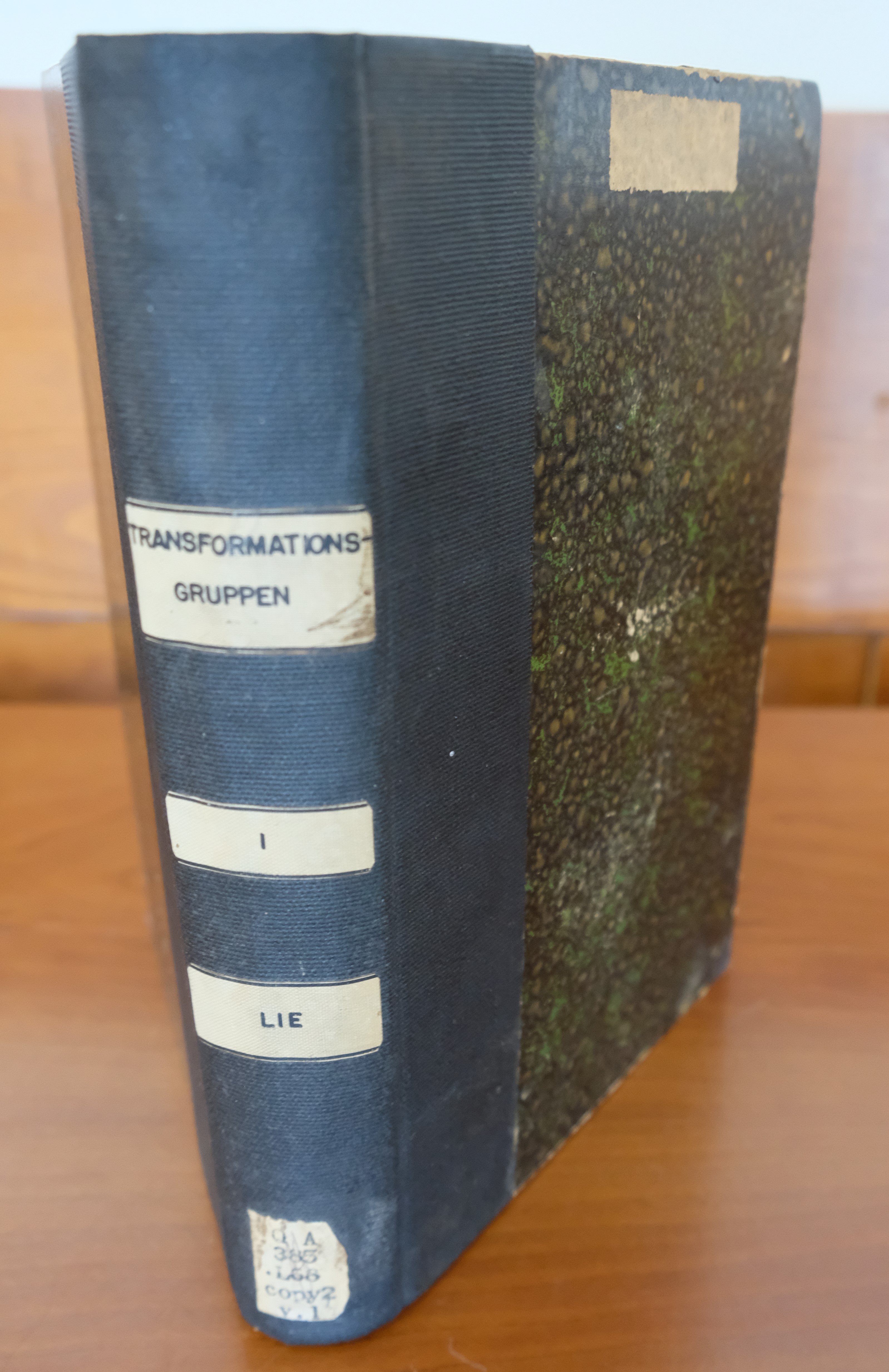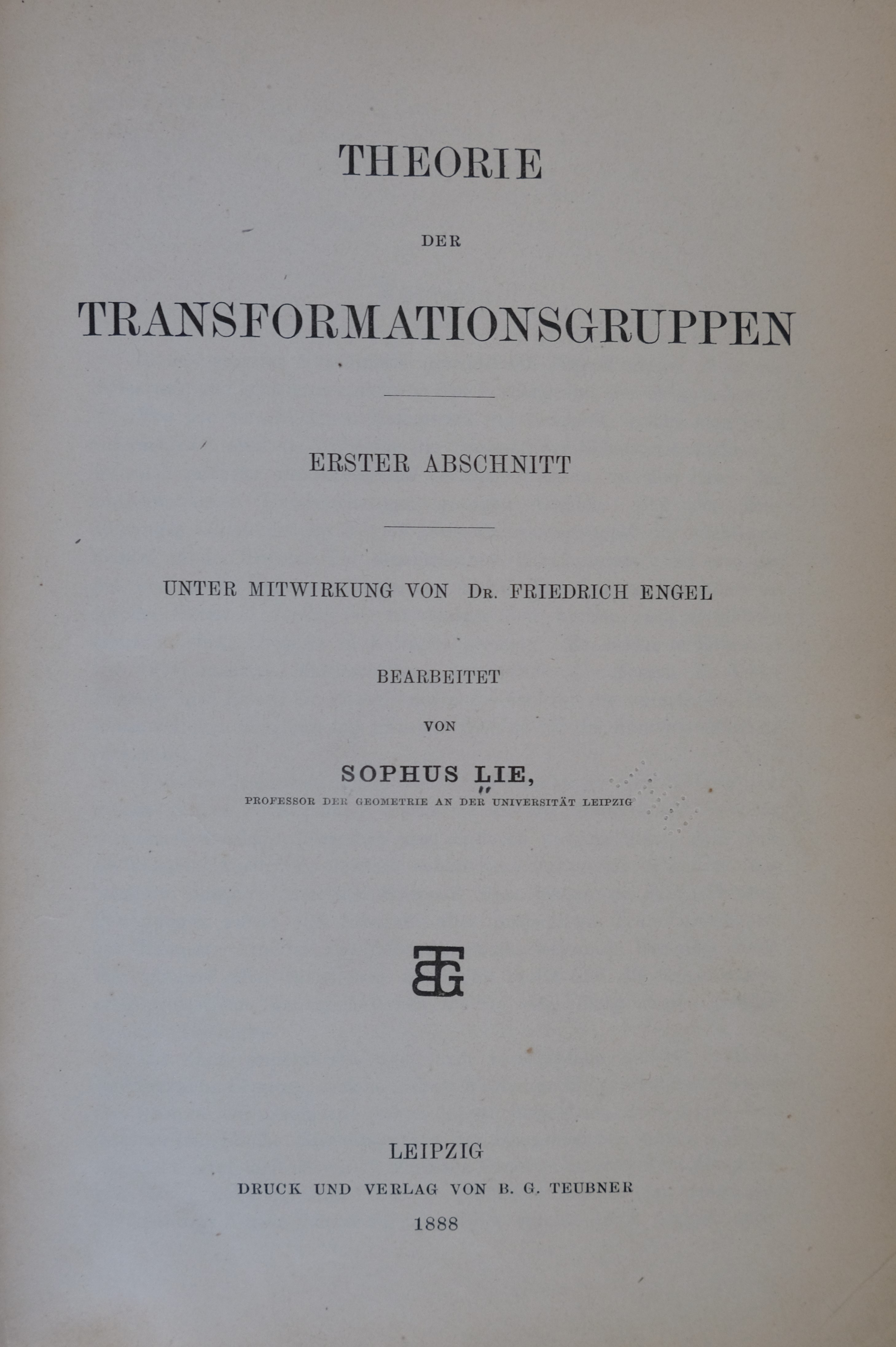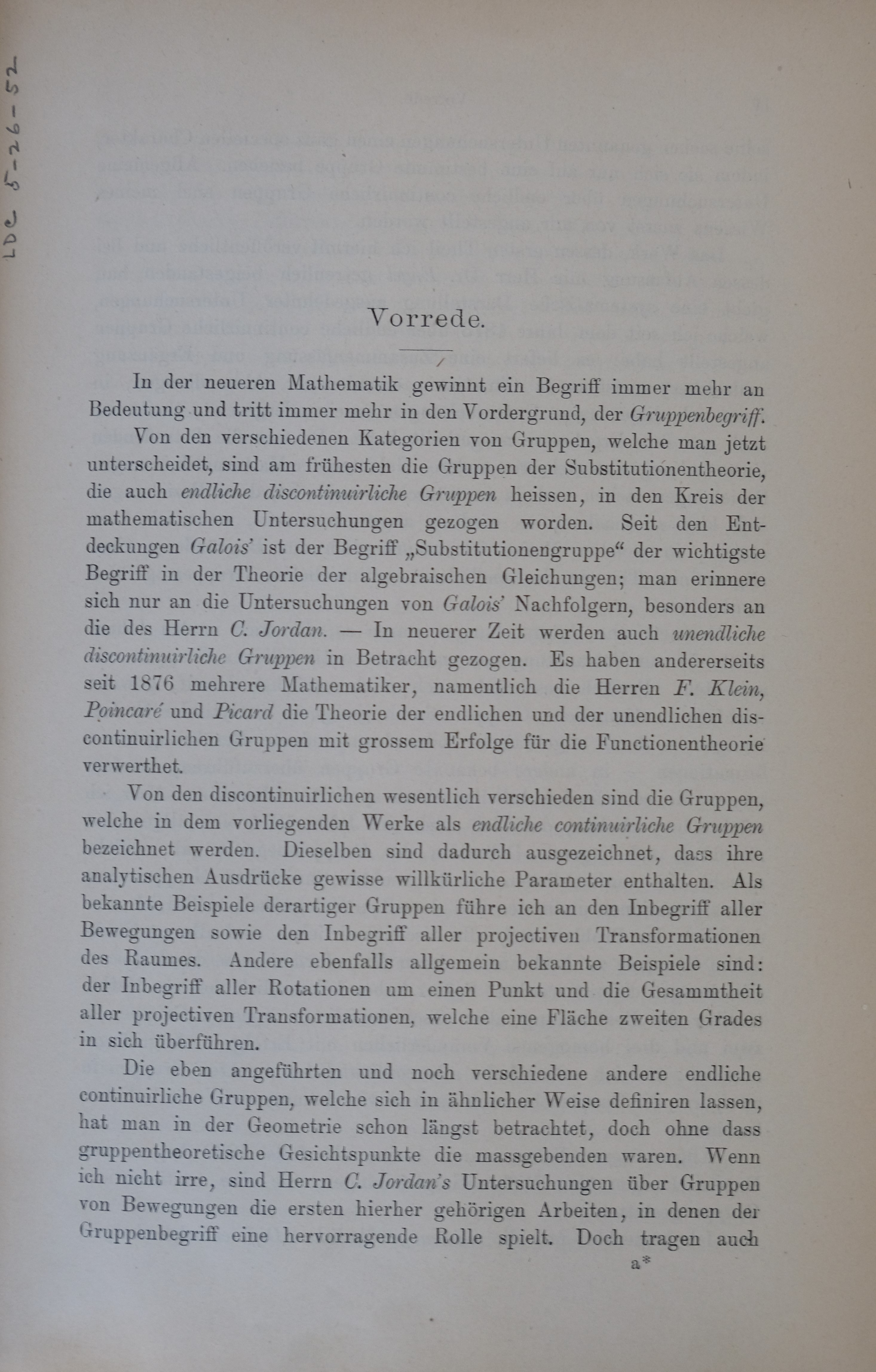1. Overview
Marius Sophus Lie was a Norwegian mathematician who is renowned for largely creating the theory of continuous symmetry and applying it to the study of geometry and differential equations. His seminal work led to the development of Lie groups and Lie algebras, which have become fundamental tools in diverse fields of modern mathematics and physics. Lie's approach involved linearizing transformation groups to understand them through their corresponding vector fields, known as infinitesimal generators, which form the structure of a Lie algebra via the commutator bracket. His groundbreaking ideas profoundly influenced later mathematicians like Hermann Weyl and Élie Cartan, and found significant applications in areas such as quantum mechanics. He also played a crucial role in advocating for the establishment of the Abel Prize, a prestigious international award for outstanding achievements in mathematics.
2. Life
Marius Sophus Lie's life was marked by his profound mathematical insights, significant collaborations, and personal challenges, ultimately solidifying his legacy as one of Norway's most influential scientists.
2.1. Early Life and Education
Marius Sophus Lie was born on December 17, 1842, in the small town of Nordfjordeid, Norway. He was the youngest of six children born to Lutheran pastor Johann Herman Lie and his wife, who hailed from a well-known family in Trondheim. He received his primary education on the southeastern coast in Moss, before attending high school in Oslo, which was then known as Christiania. Following his high school graduation, Lie initially harbored ambitions for a military career, but this path was closed to him due to his poor eyesight, leading him to enroll at the University of Christiania.
2.2. Early Career and Key Encounters
Sophus Lie's first mathematical work, Repräsentation der Imaginären der Plangeometrie, was published in 1869 by the Academy of Sciences in Christiania and also by Crelle's Journal. In the same year, he was awarded a scholarship that enabled him to travel to Berlin, where he stayed from September 1869 to February 1870. During his time in Berlin, Lie met the influential mathematician Felix Klein, and they quickly developed a close friendship. After leaving Berlin, Lie traveled to Paris, where Klein joined him two months later. In Paris, they encountered other prominent mathematicians of the era, including Camille Jordan and Gaston Darboux.
The outbreak of the Franco-Prussian War on July 19, 1870, abruptly cut short their collaboration, forcing Klein, a Prussian, to leave France swiftly. Lie subsequently traveled to Fontainebleau, where he was mistakenly arrested under suspicion of being a German spy. This incident, though a difficult experience, ironically brought him a degree of fame in Norway. He was released from prison after approximately one month, largely due to the intervention of Darboux.
In 1871, Lie successfully obtained his PhD from the University of Christiania (present-day Oslo) with his thesis titled Over en Classe geometriske Transformationer (On a Class of Geometric Transformations). This work was later described by Darboux as "one of the most handsome discoveries of modern Geometry." The following year, the Norwegian Parliament recognized his exceptional talent by establishing an extraordinary professorship specifically for him. In the same year, Lie visited Klein, who was then at the University of Erlangen and engaged in developing the influential Erlangen program.
2.3. Academic Career
In 1872, Marius Sophus Lie dedicated eight months to a collaborative project with Peter Ludwig Mejdell Sylow, meticulously editing and publishing the mathematical works of their notable countryman, Niels Henrik Abel. This collaborative effort demonstrated his commitment to advancing Norwegian mathematics.
From 1876, Lie took on the role of co-editor for the journal Archiv for Mathematik og Naturvidenskab, working alongside physician Jacob Worm-Müller and biologist Georg Ossian Sars. This interdisciplinary collaboration highlights his broad engagement with the scientific community.
A significant turning point in his academic career came in 1884, when Friedrich Engel arrived in Christiania to assist him. Engel's support was facilitated by Felix Klein and Adolph Mayer, both of whom were professors at Leipzig University at the time. Engel would prove instrumental in helping Lie complete his most important treatise, Theorie der Transformationsgruppen, which was published in three volumes in Leipzig between 1888 and 1893. Decades later, Engel would further cement his connection to Lie's legacy by serving as one of the two editors of Lie's collected works.
In 1886, Lie accepted a professorship at Leipzig University, succeeding Klein, who had moved to the University of Göttingen. He remained at Leipzig for several years, continuing his groundbreaking research and collaborations. In 1898, a special professorship was created for him, prompting his return to Christiania University in his homeland.
2.4. Personal Life and Later Years
In late 1872, Sophus Lie proposed to Anna Birch, who was then eighteen years old. They were married in 1874. The couple had three children: Marie, born in 1877; Dagny, born in 1880; and Herman, born in 1884.
Professionally, Lie continued to achieve recognition for his contributions. He was made an Honorary Member of the London Mathematical Society in 1878, a Corresponding Member of the French Academy of Sciences in 1892, a Foreign Member of the Royal Society of London in 1895, and a foreign associate of the National Academy of Sciences of the United States of America also in 1895.
Despite his professional successes, Lie faced significant health challenges. In November 1889, he suffered a mental breakdown and required hospitalization until June 1890. Though he returned to his post at Leipzig, over the years, his health deteriorated further due to progressive anemia. He also suffered from depression and homesickness during his time abroad. His condition, specifically pernicious anemia, worsened to the point where he found it necessary to return to his homeland. In May 1898, he tendered his resignation from Leipzig University, and he left for Norway in September of the same year.
2.5. Death
Marius Sophus Lie died the following year, on February 18, 1899, at the age of 56. His death was attributed to pernicious anemia, a severe illness caused by the impaired absorption of vitamin B12.
3. Major Contributions to Mathematics
Marius Sophus Lie's most significant academic activities revolved around the development of the theory of continuous symmetry, which fundamentally transformed the understanding of geometry and differential equations.
3.1. Development of Lie Groups and Lie Algebras Theory

Lie's core mathematical achievement was the discovery and development of the theory of continuous symmetry, which he applied to transformation groups. These continuous transformation groups are now universally known as Lie groups in his honor. A central part of his method involved "linearizing" these groups, allowing them to be better understood through the study of their corresponding generating vector fields, referred to as infinitesimal generators. These generators adhere to a linearized version of the group law, structured by what is now called the commutator bracket, and collectively form what is known today as a Lie algebra.
Lie's personal approach to continuous group theory, as conceived in his own work, is sometimes characterized as a "Lie transformation group germ." While he extensively utilized differential equations and geometry in his investigations and pursued applications to differential equations, his research was not fully completed and did not receive widespread recognition during his lifetime.
3.2. Applications and Impact on Geometry and Differential Equations
Lie's theories provided a powerful new framework for analyzing and solving differential equations, particularly those with known infinitesimal transformations. His work laid the groundwork for understanding the symmetries inherent in these equations, offering systematic methods for their integration and classification. In geometry, his concepts provided a new way to study transformations and their invariants, influencing fields like differential geometry and the study of contact transformations.
The subject of Lie groups as studied today has evolved significantly from Lie's original research. Nonetheless, his foundational ideas opened up entirely new avenues of mathematical inquiry and provided powerful tools for subsequent generations of mathematicians.
3.3. Influence on Later Mathematicians and Related Fields


Marius Sophus Lie's work had a profound and lasting influence on subsequent mathematicians and various academic fields. Hermann Weyl, a prominent mathematician, extensively utilized Lie's work on group theory in his influential papers published in 1922 and 1923, demonstrating the enduring relevance of Lie's concepts. Today, Lie groups play an essential role in quantum mechanics, highlighting their impact on theoretical physics.
Among Lie's many doctoral students, several went on to become successful and influential mathematicians. Notably, Élie Cartan is widely regarded as one of the greatest mathematicians of the 20th century, building significantly on Lie's foundations. The work of Kazimierz Żorawski proved to be of importance across a variety of fields, while Hans Frederick Blichfeldt made substantial contributions to various areas of mathematics. The theory of Lie groups, initially developed by Lie, was later completed and refined by mathematicians like Hermann Weyl and Élie Cartan in the 20th century, who also revealed its properties as a topological group.
Despite the profound impact of his work, it is noted that, among the masters of the 19th century, Lie's work is "in detail certainly the least known today." Nevertheless, the theoretical framework he established, particularly Lie groups and Lie algebras, is now widely applied across broad areas of mathematics and physics, underscoring its fundamental importance.
3.4. Role in the Establishment of the Abel Prize
Sophus Lie was a passionate advocate for the establishment of a major international prize for mathematics. His initiative was inspired by the existence of the Nansen fund, named after Fridtjof Nansen, and by the notable absence of a prize specifically for mathematics within the prestigious Nobel Prize categories. Driven by this conviction, he actively gathered support for the creation of an award dedicated to recognizing outstanding work in pure mathematics. His strong advocacy played a crucial role in laying the groundwork for what would eventually become the Abel Prize, one of the highest honors in mathematics.
4. Major Works
Marius Sophus Lie authored or co-authored several foundational academic books and papers that shaped the field of continuous symmetry and its applications.
His earliest significant publication was:
- Repräsentation der Imaginären der Plangeometrie (1869)
His doctoral thesis, which was highly praised, was:
- Over en Classe geometriske Transformationer (1871)
Lie's most monumental treatise, written with the extensive assistance of Friedrich Engel, is:
- Theorie der Transformationsgruppen I (Leipzig, B. G. Teubner, 1888)
- Theorie der Transformationsgruppen II (Leipzig, B. G. Teubner, 1890)
- Theorie der Transformationsgruppen III (Leipzig, B. G. Teubner, 1893)
He also collaborated with Georg Scheffers on several important works, including:
- Vorlesungen über differentialgleichungen mit bekannten infinitesimalen transformationen (Leipzig, B. G. Teubner, 1891)
- Vorlesungen über continuierliche Gruppen (Leipzig, B. G. Teubner, 1893)
- Geometrie der Berührungstransformationen (Leipzig, B. G. Teubner, 1896)
After his death, his collected works were published:
- Gesammelte Abhandlungen (Leipzig, Teubner; 7 volumes, 1922-1960), edited by Friedrich Engel and Poul Heegaard.
Several key papers by Lie have been translated into English, including:
- "The foundations of the theory of infinite continuous transformation groups - I"
- "The foundations of the theory of infinite continuous transformation groups - II"
- "On complexes - in particular, line and sphere complexes - with applications to the theory of partial differential equations"
- "Foundations of an invariant theory of contact transformations"
- "The infinitesimal contact transformations of mechanics"
5. Legacy and Assessment
Marius Sophus Lie's legacy is primarily defined by his profound and enduring contributions to the field of mathematics, particularly his pioneering work on continuous symmetry. His development of Lie groups and Lie algebras provided a revolutionary framework for understanding transformations and their underlying structures. Although his work was not fully completed or widely recognized during his lifetime, it laid the essential groundwork for entire branches of modern mathematics.
His theories, initially developed through the lens of differential equations and geometry, were later refined and completed by subsequent generations of mathematicians like Hermann Weyl and Élie Cartan. Today, Lie groups and Lie algebras are indispensable tools in diverse areas ranging from differential geometry and topology to theoretical physics, especially quantum mechanics and particle physics. This widespread application underscores the immense positive impact and fundamental nature of his achievements on the mathematical community and beyond. Despite the complexity and specialized nature of some of his detailed work, which may be less widely known today compared to some other 19th-century masters, the core concepts he introduced remain cornerstones of modern scientific inquiry. His advocacy for the Abel Prize further reflects his commitment to fostering mathematical excellence and recognizing outstanding contributions to the field.